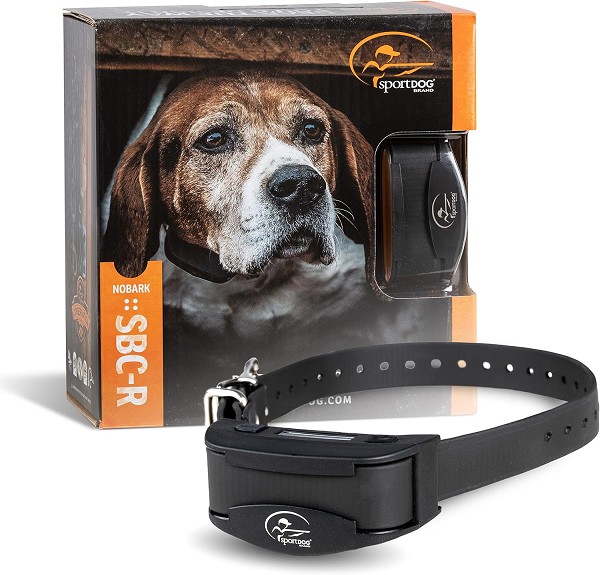Bark control collar can make a big difference in managing your dog’s behavior. Finding the right one depends on your dog’s unique needs, including size, temperament, and environment. Every dog is different, so what works for one may not work for another. Understanding the various types, features, and considerations can simplify the decision-making process. These informational tips will help you navigate the options available and make an informed choice. A suitable collar can improve your dog’s behavior and create a peaceful environment for your household.
Varity of Bark Control Collars for Dog
Static Shock Collars
These collars emit a light static shock when your dog barks excessively. They are designed to get your dog’s attention without causing harm. Adjustable intensity levels allow you to set the appropriate level for your dog’s size and temperament. However, these are not suitable for sensitive dogs or those prone to anxiety.
Vibration Collars
Collars with gentle vibrations interrupt barking in a non-invasive way. These are a softer alternative to static shock collars, making them ideal for small or timid dogs. While effective for some dogs, others might become accustomed to the sensation and stop responding over time.
Spray Collars
These collars release a burst of citronella or unscented spray when your dog barks. Dogs typically dislike the spray, which serves as a deterrent. These collars are humane and effective for most dogs but may not work well in windy conditions.

High-Frequency Sound Collars
High-frequency sound collars produce a high-pitched tone that’s inaudible to humans but unpleasant for dogs. These can be an excellent choice for dogs that respond well to auditory cues.
Combination Collars
Some collars combine features, such as vibration, static shock, and sound. These versatile options allow you to customize the correction type based on your dog’s response.
Key Considerations for Selecting Bark Management Collar
Dog’s Size and Weight
Always check the manufacturer’s recommendations for weight and neck size. Using a collar not suited to your dog’s size can result in discomfort or ineffectiveness.
Behavior and Sensitivity
A dog’s temperament plays a significant role in choosing the right collar. Sensitive dogs may respond better to vibration or spray collars, while more stubborn dogs may need static or ultrasonic options.
Training Goals
Understand your objectives. If you want to curb excessive barking without physical corrections, opt for spray or ultrasonic collars. For persistent barkers, combination or static collars might be more effective.
Environment and Barking Triggers
Consider where your dog spends most of its time. Spray collars may not work well outdoors, while ultrasonic collars could be less effective in noisy environments. Identify the primary triggers for your dog’s barking to choose the best solution.

Ease of Use
Look for collars with user-friendly features like adjustable intensity, rechargeable batteries, and clear instructions. For example, brands like RadioFence.com offer collars with simple setups and easy-to-follow guides. Complicated setups can hinder training progress, so choosing a reliable option ensures smoother training experiences.
Benefits and Risks of Bark Control Collars
Benefits
- Helps reduce nuisance barking effectively.
- Promotes a calmer household and community.
- Provides an alternative to verbal or physical corrections.
- Encourages consistent training.
Risks
- Improper use can cause stress or fear in dogs.
- Not all collars are suitable for every dog.
- Overuse may desensitize dogs to the correction.
Effective Ways to Use Bark Control Collars
- Start with the lowest setting: Always begin with the gentlest correction level and adjust as needed.
- Monitor your dog’s reaction: Pay attention to how your dog responds to the collar. Stop use immediately if you notice signs of distress.
- Use as part of a broader training plan: Combine the collar with positive reinforcement and behavioral training for long-term success.
- Avoid prolonged use: Bark control collars should only be used during training sessions or specific times, not continuously.
Common Questions About Bark Control Collars
Are bark control collars safe for dogs?
Bark control collars are safe when used properly. Always adhere to the manufacturer’s instructions and closely observe your dog’s behavior to ensure their comfort and well-being.
How do I know which collar is best for my furry friend?
Consider your dog’s size, temperament, and the severity of their barking. Match these factors with the collar’s features for the best fit.
Can a Anti-Bark Device/Collars stop all barking?
No. These collars are designed to reduce excessive barking but won’t eliminate natural barking entirely. Dogs bark to communicate, and that should be respected.
Are spray collars harmful to dogs?
Spray collars are humane and non-toxic. The scent or sensation is unpleasant but not harmful to dogs.
Is a Bark Control Collar Suitable for Puppies?
Most manufacturers recommend using these collars on dogs aged six months or older. Puppies are still developing, and other training methods may be more appropriate.
Help Your Dog Bark Less and Live Happier
Choosing the right bark control collar involves understanding your dog’s unique needs and matching them with the appropriate features. From static shock to ultrasonic options, there is a solution for every dog and situation. Always prioritize safety, comfort, and proper training techniques when using these collars. A well-chosen collar, combined with positive reinforcement, can help address excessive barking effectively and strengthen the bond between you and your dog.

